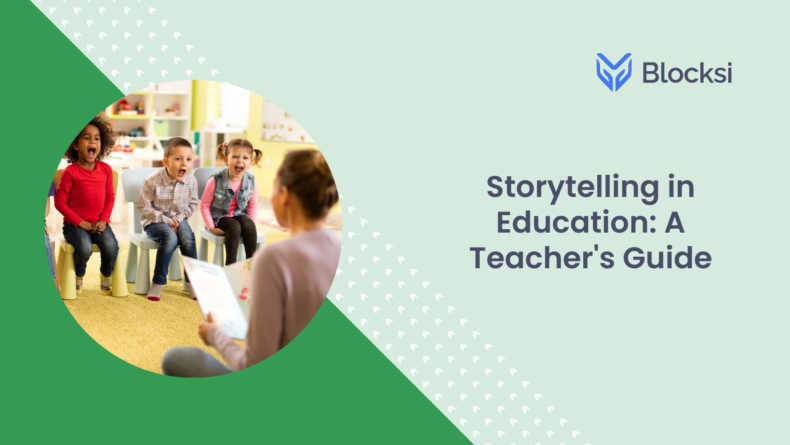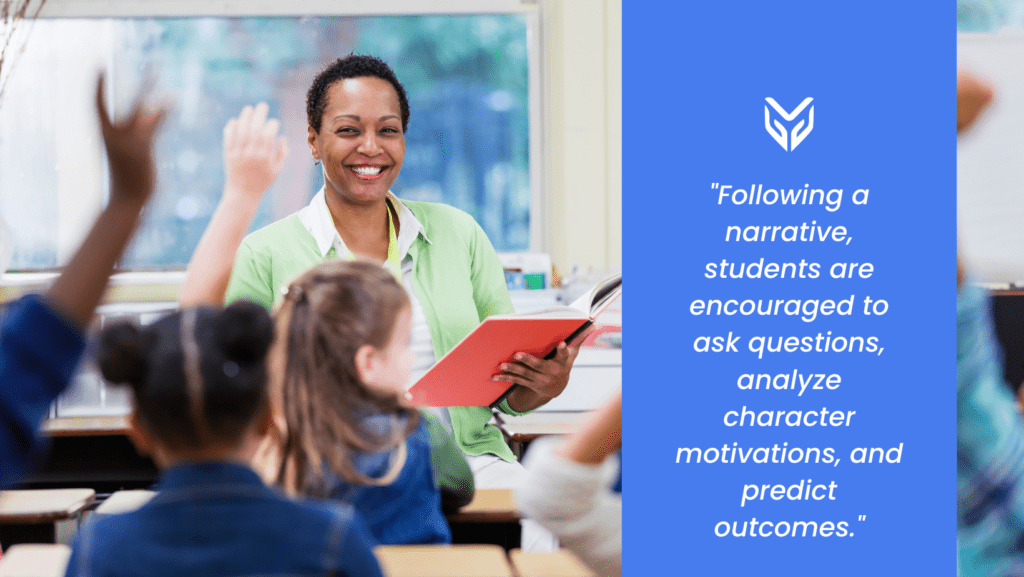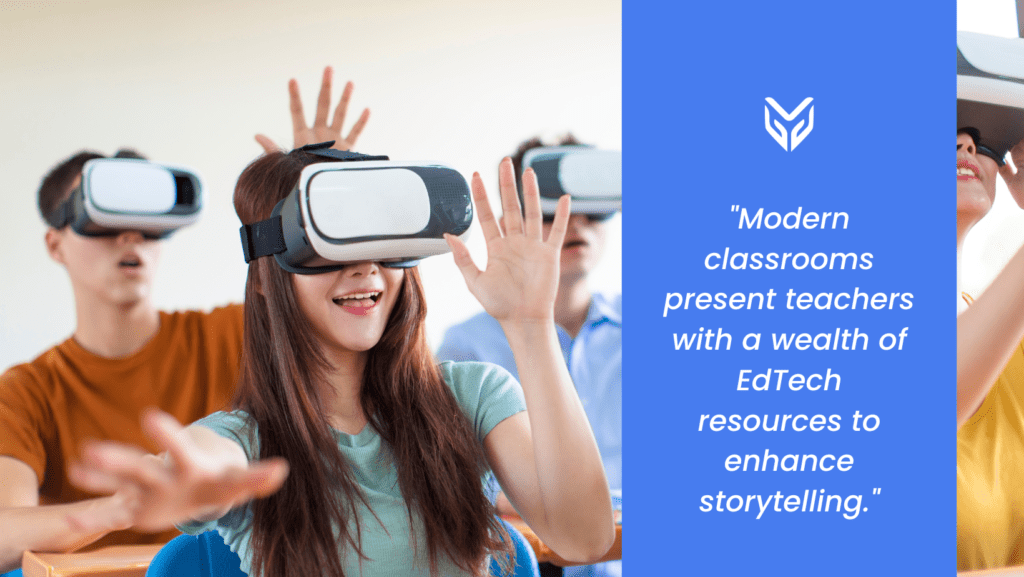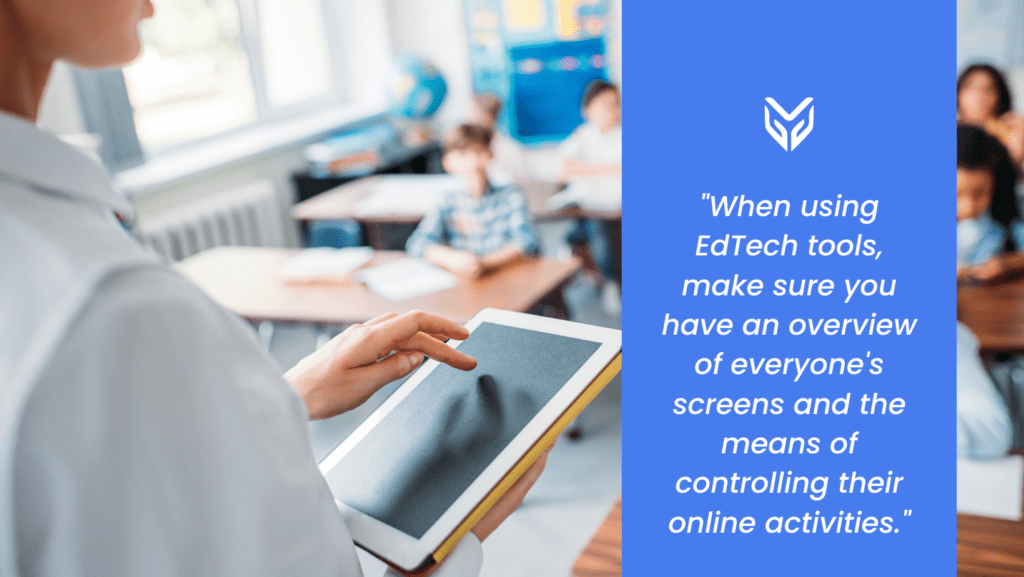NEWS
Storytelling in Education: A Teacher’s Guide

Modern technological progress is transforming various areas, including education. But when it comes to learning, the human factor remains the first. And one timeless tool that continues to captivate and inspire students is storytelling. As educators, we know that learning is not just about facts and figures; it’s about creating meaningful connections, nurturing curiosity, and fostering a love for knowledge. Storytelling in education accomplishes all of this and more. In this article, we will delve into the art of storytelling and explore how teachers can use it to enhance their teaching methods. Additionally, we will touch upon integrating Educational Technology (EdTech) tools to amplify the impact of storytelling in the 21st-century classroom.
The Power of Storytelling
Storytelling is a centuries-old, powerful educational technique to convey information, values, and culture. Using stories, teachers can transform abstract concepts into relatable, memorable experiences. When students can connect with the material personally, they are more likely to stay engaged and retain information. Encouraging the use of imagination and complex topics becomes accessible and enjoyable.
One of the key advantages of storytelling is its ability to bridge the gap between the known and the unknown. When teachers craft narratives that start from a familiar point and gradually introduce new ideas, students are more likely to grasp and internalize those new concepts. This gradual introduction of information creates a natural progression in learning, preventing students from feeling overwhelmed.
Another advantage is fostering critical thinking in students. Following a narrative, students are encouraged to ask questions, analyze character motivations, and predict outcomes. These cognitive processes help students develop their analytical and problem-solving abilities. Additionally, storytelling promotes empathy by allowing students to explore different perspectives and understand the motivations of various characters.

Tip #1 Choose the Right Story
Selecting an appropriate story is the foundation of compelling storytelling in education. Consider your learning objectives, the age of your students, and their interests. Whether you choose a classic fable, a historical account, or a contemporary novel, ensure that the story aligns with the curriculum and can be used to convey the desired educational content.
Tip #2 Create a Narrative Arc
Every great story has a structure, and so should your educational narrative. Begin with an engaging introduction that grabs your students’ attention and sets the stage for the lesson. Then, develop the narrative by introducing key concepts and characters. Gradually build tension or complexity, leading to a story climax. Finally, conclude the story with a resolution that ties everything together and reinforces the lesson’s main points.
Tip #3 Enhancing Storytelling With EdTech – Using Interactive Multimedia
Modern classrooms present teachers with a wealth of EdTech resources to enhance storytelling. Incorporating multimedia elements such as videos, animations, and interactive quizzes can make your stories even more engaging. For instance, when teaching a history lesson about ancient civilizations, you can use virtual tours and 3D reconstructions to transport students to that era, allowing them to explore and interact with the content firsthand.

You can also use classroom monitoring software to create gamified tasks and assessments to further students’ learning. Using modern tools like Blocksi, you can delegate creative tasks that will ignite curiosity in students and leave them with memorable knowledge.
Tip #4 Collaborative Learning
EdTech tools also facilitate collaborative storytelling projects. Software like Blocksi also enables integrating learning platforms, like Kahoot!, and student communication, allowing them to work together on a single story, each contributing their ideas and creativity. Collaborative storytelling not only promotes teamwork and communication skills but also allows students to benefit from diverse perspectives and ideas.
Overcoming Challenges Brought by Education in Storytelling
While storytelling is a captivating technique, keeping students engaged throughout the lesson is essential. To prevent distractions, consider using visuals, props, or even occasional changes in your storytelling tone. These elements can rekindle students’ interest and ensure the educational message is retained. When using EdTech tools, make sure you have an overview of everyone’s screens and the means of controlling their online activities.

While planning storytelling activities, also remember every student has a unique learning style. Some are visual learners, while others thrive on auditory or kinesthetic experiences. To accommodate these differences, vary your storytelling approach. For visual learners, use images and videos. For auditory learners, focus on oral storytelling and audio media. And for kinesthetic learners, incorporate hands-on activities that align with the narrative.
Use Storytelling To Uplift Learning
Storytelling in education is a versatile and time-tested approach that can transform your teaching methods and engage students on a deeper level. You can create a dynamic and enriching learning environment by choosing the right stories, crafting compelling narratives, and incorporating EdTech tools. Embrace the art of storytelling in your teaching journey, and watch as your students’ love for learning blossoms, one story at a time.
Incorporate storytelling into your teaching and use the power of EdTech for a transformative educational experience. Seize the opportunity to become master storytellers in your classrooms and inspire the next generation of learners.
SOURCES
[1] The Psychological Power of Storytelling
[2] Why Storytelling in the Classroom Matters





